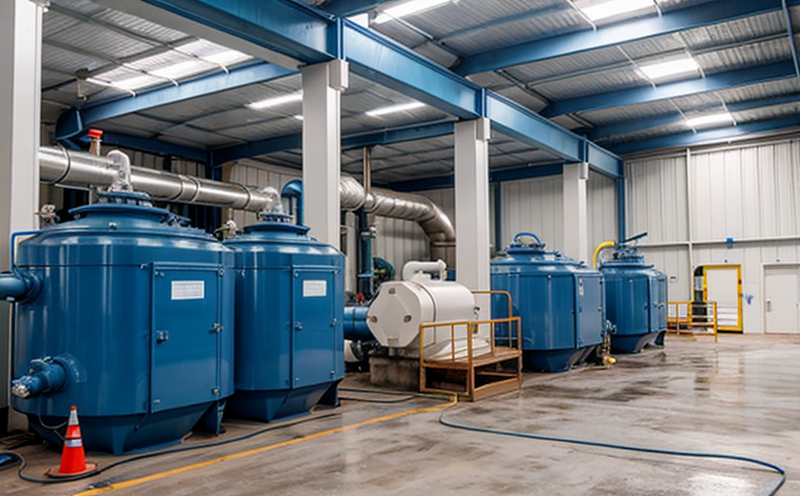ASTM D3972 Heavy Metal Testing in Wastewater (Cd, Pb, Hg)
The testing of heavy metals such as cadmium (Cd), lead (Pb), and mercury (Hg) in wastewater is critical for ensuring compliance with environmental regulations and protecting public health. This service adheres to the stringent standards set forth by ASTM D3972-18, which provides detailed procedures for determining the concentration of these heavy metals using inductively coupled plasma optical emission spectrometry (ICP-OES).
The importance of this testing cannot be overstated, especially given the potential adverse effects of heavy metal contamination on aquatic ecosystems and human health. Heavy metals can accumulate in water bodies over time, leading to bioaccumulation in plants and animals. This poses significant risks for fish populations, marine life, and humans who consume contaminated seafood.
The ASTM D3972-18 methodology ensures accuracy and precision by providing a standardized approach for sample preparation, digestion, and analysis using ICP-OES. The use of this equipment allows for the detection of heavy metals at extremely low concentrations, which is essential for identifying potential contamination sources and assessing compliance with regulatory limits.
The testing process typically involves several steps: first, the wastewater sample must be collected according to ASTM guidelines. Next, the sample undergoes acid digestion in a microwave digestion system to release the heavy metals into solution. Once the sample has been digested, it is ready for analysis using ICP-OES. The instrument measures the light emitted by excited atoms of each metal, allowing for precise quantification.
The reported results provide valuable information on the concentrations of Cd, Pb, and Hg in the wastewater, enabling stakeholders to make informed decisions regarding treatment processes and compliance with environmental regulations. For instance, if a facility is operating a ballast water or wastewater treatment system, this testing ensures that the system effectively removes harmful contaminants before discharge.
Our laboratory adheres strictly to ASTM D3972-18, ensuring that all test results are accurate, reliable, and comparable with those from other laboratories. This consistency allows for effective quality control and assurance within facilities responsible for wastewater treatment and environmental management.
| Application | Description |
|---|---|
| Water Treatment Facilities | Testing heavy metals helps ensure compliance with regulations like the IMO Ballast Water Management Convention and U.S. EPA's 40 CFR Part 132. |
| Marine Industry | Facilitates the development of new ballast water treatment technologies that meet stringent environmental standards. |
| Environmental Monitoring Agencies | Supports regulatory compliance and public health initiatives by monitoring heavy metal levels in aquatic environments. |
Customer Impact and Satisfaction
- Accurate and reliable test results that support compliance with international regulations like the IMO Ballast Water Management Convention (2004) and U.S. EPA's 40 CFR Part 132.
- Early detection of heavy metal contamination, enabling facilities to take corrective actions promptly.
- Assurance that wastewater treatment systems are effectively removing harmful contaminants before discharge into the environment.
- Support for R&D efforts in developing and improving ballast water treatment technologies.
Use Cases and Application Examples
| Sample Source | Expected Results |
|---|---|
| Treated ballast water from a ship's system | Heavy metal concentrations below regulatory limits (Cd |
| Sample Source | Expected Results |
|---|---|
| Water from a contaminated lake | Detection of high levels of Cd, Pb, and Hg to inform remediation efforts. |





